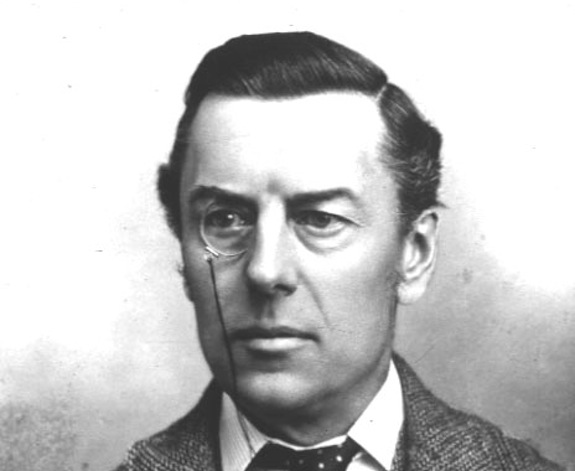Why Do Rich People Wear Monocles?
Monocles have been the chosen eyewear of our cartoon rich people for a long time now

Joseph Chamberlain, monocled. Image: Villafanuk
Imagine a super rich person. Someone like Sheldon Adelson or Warren Buffet or Mr. Monopoly. Is he wearing a monocle? It’s possible: monocles have been the chosen eyewear of our cartoon rich people for a long time now. But how did the monocle become synonymous with rich?
Slate has a rundown on the history of the one-eyed spectacle:
Though the exact origins of the monocle are unclear, fashion historian Richard Corson sets their general appearance around the turn of the 19th century in Great Britain, with quick adoption and further development in Germany. According to a 1950 article from Optical Journal, from the beginning the single lens carried with it “an air of conscious elegance,” making it ripe for ridicule: “ne had the feeling the wearer was being a trifle foolish, an attitude which resulted to some extent from the fact that monocles frequently did not fit and kept dropping out of place.”
And it’s precisely that impracticality, Slate says, that made the monocle a status symbol. The only kind of monocle that didn’t require serious eye strain, was one custom fitted to the person’s face—a process that was quite costly. And, as with many things associated with the super rich, the monocle soon became a symbol of oppression and insane wealth. Here’s Slate again:
The association of monocles with a stereotype of the rich, especially with the rich and pretentious, began at least as early as Charles Dickens’ skewering of young Mr. Barnacle’s intractable eyepiece in Little Dorrit, serialized between 1855 and 1857. In America, the image was largely popularized by E.A. Sothern’s portrayal of the silly English nobleman Lord Dundreary in Our American Cousin, first performed in 1858.
You can still buy monocles, even from hip stores like Warby Parker. In fact, the Huffington Post had a whole discussion about whether or not hipsters should be wearing monocles:
But should hipsters start wearing monocles? This has been a hot-topic of debate with scientists at UC Berkeley. A monocle has everything a hipster craves. It complements a twirly mustache. Perfect! Using facial muscles to hold a monocle in place causes one to sneer. Excellent! A monocle creates the impression that the person knows everything there is to know. Fantastic! Wearing a monocle is extremely ironic and makes you look like Rich Uncle Pennybags. Amazing! A surprised expression will cause a monocle to drop for emphasis. Fabulous!
Rachel Maddow tried one on and summed up the experience saying “Ow, do people really wear these?”
But it wasn’t their stereotypical rich-guy air that made monocles fall out of favor. Most places say their fall from grace was due to their popularity with German military officials—a group most people wanted to distance themselves from after World War II. But Maddow has an alternate take, one that looks at the modern Billionaire for Bush or Billionaires for Wealth Care movements:
Around the same time that monocles were trending with rich British and French people, there was another fashion trend taking hold, Dandyism. A dandy would dress elegantly, sometimes exaggeratedly so, imitating aristocracy despite middle class standing. In terms of sheer costuming, it makes me think of Japanese Harajuku style, but I reckon it’d be more accurate to think of them as hipsters who dress fancy instead of like slobs starving artists. So not only is there a history of rich people wearing monocles, but there’s a history of dressing up like rich people with monocles as an element of the costume.
My proposal is this: Even though it’s true that rich capitalists once wore top hats and monocles, when we wear those things to portray rich capitalists, what we’re really doing is drawing upon a tradition that featured those characteristics as part of a flamboyant caricature that serve as a placeholder in the popular imagination. In support I’ll offer The New Yorker’s Eustice Tilley and early 20th century fictional character Psmith, both based on actual rich people but both drawing on dandy fashion, including the monocle.
So today, when people wear monocles they’re not doing it because they’re rich, they’re doing it as a prod at the rich—either in ironic hipster fashion or as a part of political commentary.
More from Smithsonian.com:
/https://tf-cmsv2-smithsonianmag-media.s3.amazonaws.com/accounts/headshot/Rose-Eveleth-240.jpg)
/https://tf-cmsv2-smithsonianmag-media.s3.amazonaws.com/accounts/headshot/Rose-Eveleth-240.jpg)